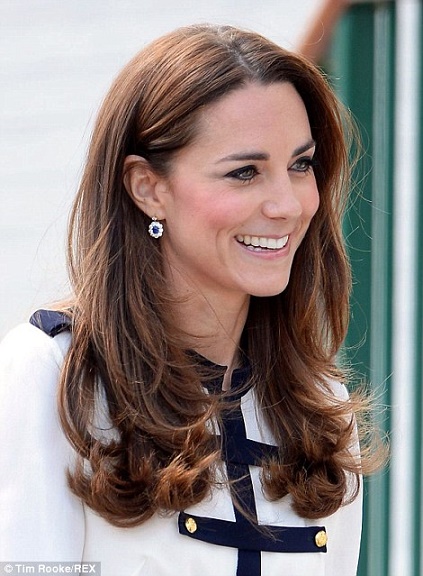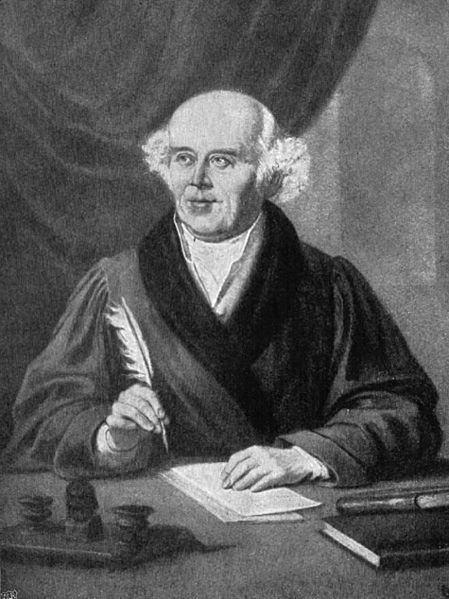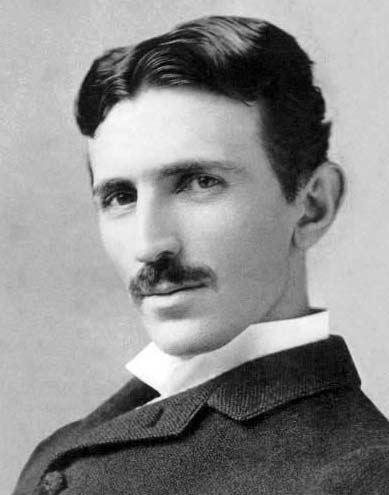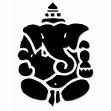
Vimshottari Dasha - Rashi - Gochara - Bhava - Graha - Ratna - Nakshatra - Amsha - Karaka - Varga - Bala
Kumara from sdmart.org
The eternally youthful son of Shiva and commander of His army.
20th century India. from San Diego Museum of Art -- www.sdmart.org

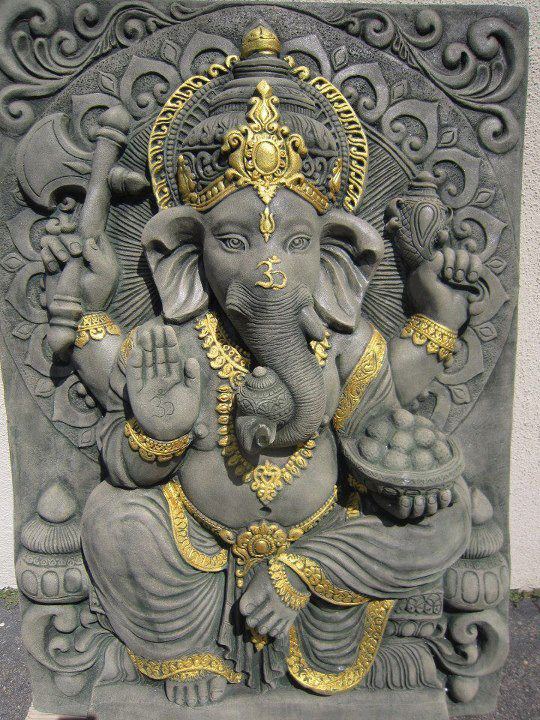
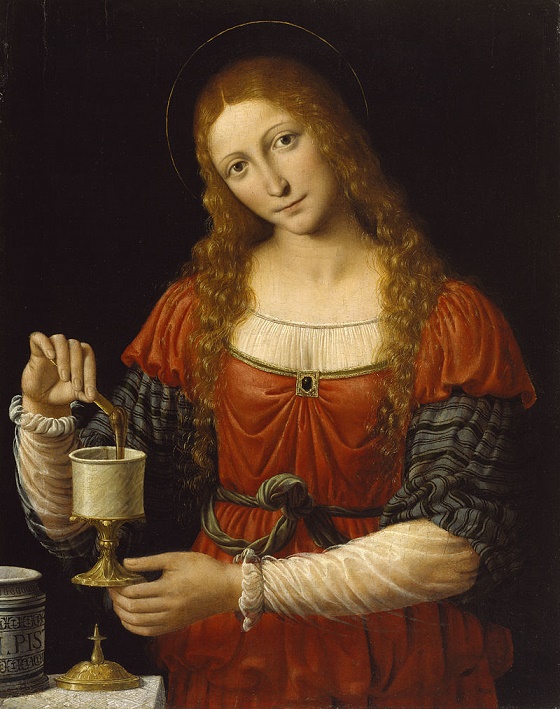
Magdalena the Egyptian priestess + lifemate of the Christos
mixing a sacred potion into the holy cup. painted in the studio of Andrea Solario, c.1524
Vata
- [Aśvini - Dasra]
- [Bharani - Yamuna]
- Kṛttikā - Pleyades]
- [Rohiṇī - Aldebaran]
- [Mrigashira - Invaka]
- [Arudra - Betelgeuse]
- [Punarvasu - Yamaka]
- [Pushya - Sidhya]
- [Aśleṣa - Naga]
Pitta
- [Magha - Regulus]
- [Pūrvaphalgunī - Yonī]
- [Uttaraphalgunī - Aryaman]
- [Hasta - Savitri]
- [Chitra - Spica]
- [Svati - Arcturus]
- [Viśākha - Rādhā]
- [Anuradha - Maitreya]
- [Jyeṣṭha - Antares]
Kapha
sumanasa vanthitha thevamanohari aswini thevi sahaayakrube|

AUM kem ketave namah
OM shram shreem shroum sah ketave namah
√ ह्रेष् ɦreʂ = neigh, whinny, go, move
Ashvini
अश्विनी aśvinī
अश्व ashva = stallion
अश्वा ashvā = mare
अश्वा ashvā = mare
+ suffix inī = ved.fem.decl.nom.dual.
= two horses
अश्वकिनी aśvakinī
अश्वक aśvaka = horselike
+ plural suffix inī = characterized-by
आश्विन āśvina
= sacrifice or weapon dedicated to the aśvin
आश्विनेय
āśvineya
[
= twin physician sons named Nasatya and Dasra, born of Ashvini with Surya
Ashvayuja
आश्वयुज āśva-yuja
= आश्व ashva horse + युज yuja born
Dasra
दस्र dasra
one of the twin sons of Ashvini and Surya
may refer to Dasra only, or to both offspring
दस्रदेवता dasra-devatā
= having the dasra as its divine patron
Nāsatyā
नासत्या nāsa-tyā
one of the twin sons of Ashvini and Surya
may refer to Nasatya only, or to both offspring
Yamau
यमौ yamau [nom. dual] = twins, pair, couple
अश्वत्थ aśvattha
pippala tree
=
the legendary tree under which aśva
[
asvayujas - ashvayujau
- ashvashirsha - ashvashiras - ashvati - aswathy
fasra -- dhata
contributions coming to Earth
from the star-civilizations
based in star-systems = Sharatan + Mesarthim
https://en.wikipedia.org/wiki/Beta_Arietis
https://en.wikipedia.org/wiki/Gamma_Arietis
The first one
Empowered to Initiate - Twins of Sanga
" Thinks-and-Acts out of the Box" [Ketu]
curriculum of eccentric pioneering
Ketu liberates unprecedented invention
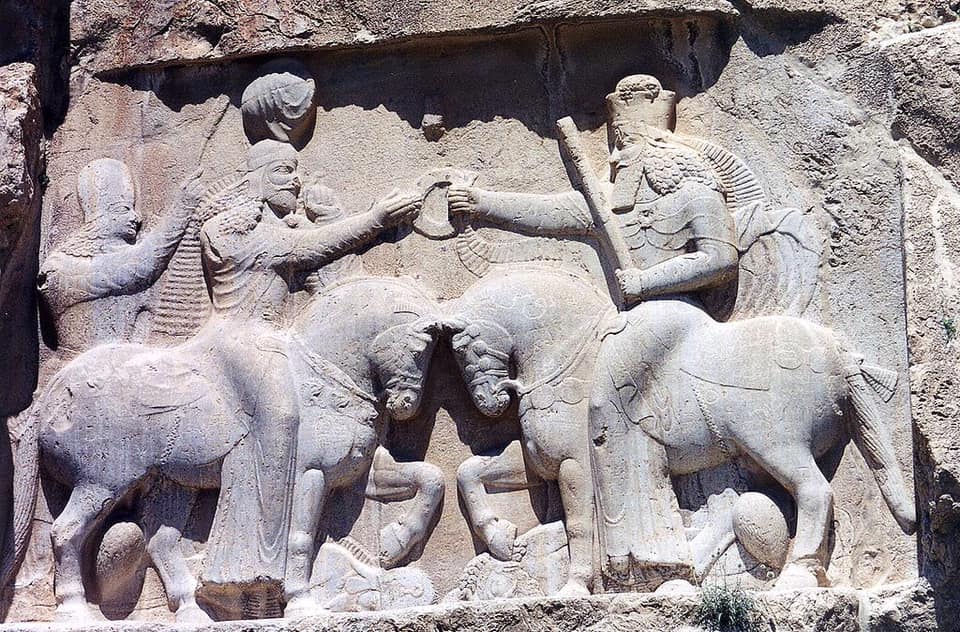
سنگنگاره اهورامزدا و اردشیر بابکان
نقش رستم
Ardeshir Coronation scene at Naqsh-e Rostaam
The Stone of Ahuramazda + Ardeshir Babakan
the First Nakshatra (new system)
-
00:00 Mesha - Aja until 13:20 Mesha
-
Pada-1, 2, 3, 4 of total 108
-
0-13:20 degrees of Meza
Aśvini Nakshatra Celestial Location
Arietis
-
Mesarthim (= of Mesha - the first one ) - gamma Arietis
-
++ Sharatan - beta Arietis
Regional Names for Aśvini Nakshatra
- Asvayujas
- Ashwin - Aswini - Aśvini - Aswathy - Ashvakinee
- Ashvati - Ashvattha - Ashvattha
- Asvaryuj - Aswija - who yokes the horses
- Ashva-sirsha - Asva-zirshan - horse-headed
- Dasradevataa - Dasra
- Dhata
- janman - birth, production, planted, origin, born from, existence, life (first nakshatra)
- Nasatya
- Suta
- tanugriha (first nakshatra)
- Vaajibha
- udaya - going up, rising, swelling up (first nakshatra)
Shrona - Ashvattha (Shrona is a rendering of Śrāvaṇa nakshatra. Ashva-attha means the tree under which horses take shelter. This same tree, Ficus Religiosa, is also a place where the Shaman/Shramin go to listen to the spirits. But Ashvattha is also sometimes applied as a moniker for Aśvini.
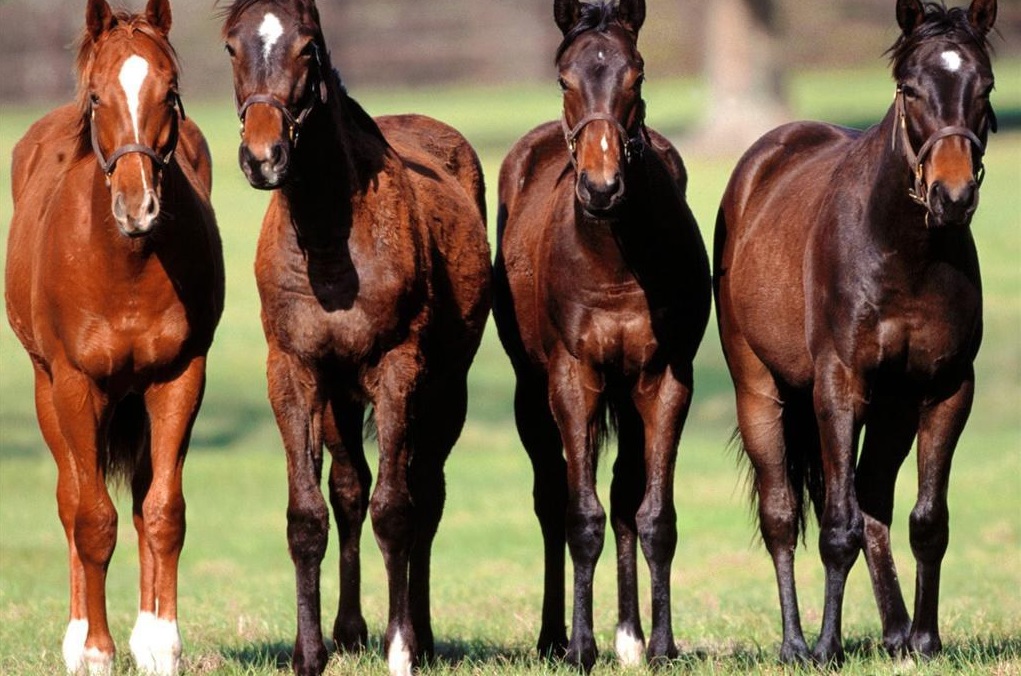
Nakshatra Vana
Plants Sacred to Aśvini Nakshatra
see nakshatra gardens at: www.vedicvanas.com/nakshatravana.html
-
western botanical name = Strychnos nux vomica
-
Sanskrita namah: ramyaphala, garadruma, tindu, viSatindu
-
Common names = Poison Nut, strychnine Tree
KUCHALAVRUT (KARSKAR) TREe
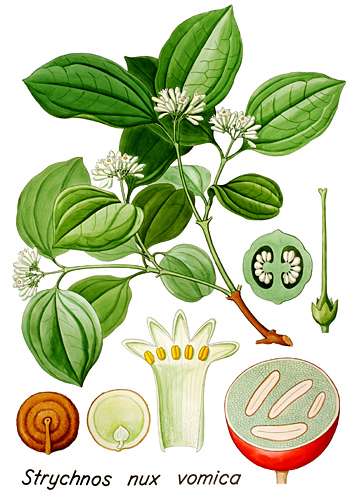
parts of the Strychnine tree
sacred to Aśvini Nakshatra
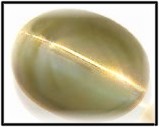
Chrysoberyl Ketu-Ratna
Sacred traditional Gems for Ketu
Mangala-Aśvini for Kumbha-lagna where Kuja occupies bhratri-sthāna-3 can produce a twin brother, possibly a twin sister.
If Aśvini contains a pitri-karaka such as Surya or Guru, or such as the dharma-pati patron of 9 (father) or the bhratru-pati patron of 3 (siblings) or even the labha-pati patron of 11 which can signify the father's immediate younger brother or 11 can also signify the elder brother of the native, then the "twinning" feature may apply to that agent.
E.g. patron of bhava-9 occupies Aśvini, the father may have a twin.
wikipedia = Aśvini
Aśvini Nakshatra Meanings
" Possessing Horses" - "The Horsewoman"
-
"... horses... breath... bring wonderful help... Truthfulness..." ~~ Roebuck, The Circle of Stars, p 103
-
Asva-r-yujya = "She Who Yokes Horses"
Aśvini Nakshatra planetary (upagraha) ruler
-
Professor Ketuva
Aśvini Nakshatra protective deity Regents - bhapa - bhesha
-
Asvins, gods of the dawn, bringers of health and well-being
-
Aśvini Kumara
Aśvini Nakshatra Symbol
- horse
- horse's head
Aśvini Nakshatra Gana - group:
- Heavenly - Deva
Aśvini Nakshatra Guna of the Aśvini Nakshatra
- Dharma = observation of phenomena, comprehension, understanding
Aśvini Nakshatra Tibetan Tradition
-
Takar ( a-Kar) = Goddess
-
Ta Denma = The Equine or Shining Daughter
-
Jugu
Aśvini Nakshatra Bija (seed) syllables
-
pada-1 = choo (k)
-
pada-2 = chay (ch)
-
pada-3 = cho (T)
-
pada-4 = laa (r)
Aśvini Nakshatra Stotram - pada-1
-
OM Visham Vishur Vashatkaro Bhuta Bhavya Bhavat Prabhuh
-
Bhutakrud Bhutabhrud Bhavo Bhutama Bhuta Bhavanah
Aśvini Stotram - pada-2
-
Putatma Paramatma Cha Muktanam Parama Gatih
-
Avayayah Purusha Sakshi Kshetrajno Kshara Eva Cha
Aśvini Stotram - pada-3
-
Yogo Yogavidam Neta Pradhana Purushesvarah
-
Narasiha Vapu Shriman Kesavah Purushottamah
Aśvini Stotram - pada-4
-
Sarvah Sarvah Sivah Sthanur Bhutadir Nidhir Avyayah
-
Sambhavo Bhavano Bharta Prabhavah Prabhur Isvarah
Aśvini Nakshatra Body Part
-
Top of Foot of the nakshatrapurusha - Kala-purusha
BPHS Auspicious activities Aśvini Nakshatra
- Travel
- taking medicine
- making ornaments
- beginning lessons
- beginning architectural studies
- buying or selling
- starting a journey via elephants or other vehicles.
- Applies to nakshatra of indriya-lagna AND nakshatra of Chandra. For emotional relationships, nakshatra of Chandra is more influential in determining compatibility and ease of interaction.
Psycho-socially compatible with Aśvini - Dasra
Nakshatra of Rāhu or Ketu - whether highly exciting [Rahu] or deeply observing [Ketu] the fascinating yet disruptive nodal styles are well suited to partner with each other. Rahu-Rahu, rahu-Ketu, and Ketu-Ketu pairings are found in environments that require irregularity, social non-conformism, opportunism, adventurous excitement, challenge to existing standards, cultural mixing, wandering patterns, and spiritual detachment..
Psycho-socially neutral with Aśvini - Dasra
Nakshatra of Mangala - Kuja and No-contact Ketu are assigned to share governance of secret-revealing, therapeutically invasive Vṛścika rashi. Mangala prefers to move vigorously and directly toward the goal, while Ketu's pathway tends to be nebulizing and foggy. Nevertheless, certain combinations of Ketu with Mangala can be temporarily yet profoundly healing within a narrative of active distancing, vigorous detachment, and energetically disconnected witness perspective.
Nakshatra of Brihaspati - Brihaspati's ever-expanding realm of inclusive doctrinal understanding can be supplemented by dissolving Ketu, and Guru-Ketu combinations can reflect a theoretically abstractive pair. However, the principled methods of Guru's outreach preaching are typically incommensurable with the apparently aimless disorientation of Ketu. These pairings may have a temporary shared spiritual agenda, but they are Typically, not sustainable.
Psycho-socially uneasy with Aśvini - Dasra
Nakshatra of Shukra = Shukra is all about equal matches, pleasures, and partnership. No-contact Ketu the chidrakaraka is all about disconnection, amputation, splitting. This couple is not adversarial. Rather, it finds no mutual point of contact. The Shukra partner seeks harmonious, wealth-accruing unions whereas the Ketu partner seeks pilgrimage, wandering, witnessing dispersion. Low potential for agreement.
-
[Bharani - Yamya] + + [Pūrvaphalgunī - Yonī] + + [Pūrvāṣāḍhā - Apah]
Nakshatra of Shani - Shani imposes the rules and Ketu dissolves the rules Generally Ketu folk feel restricted in Shani's fixed-role, orderly environments. Ketu tends to find Shani as rather meaninglessly punitive, purposelessly strict, or uselessly authoritarian. Ketu wanders on.
-
[Pushya - Sidhya] + + [Anuradha - Maitreya] + + [Uttarabhadra - Andromeda]
Most catalytic nakshatra -- may pose a Learning Challenge - for Aśvini - Dasra
Nakshatra of Chandra - Ketu and Chandra form an inherently uncomfortable union. Chandra stabilizes, settles, cultivates, harvests, and nurtures. Ketu blows through Chandra's settlements like a dust storm, desiccating the nurturing waters and pulverizing ancestral roots. Chandra the Sustainer can withstand most of Ketu's disconnective effects but even so, chandra is wary of amputation, decapitation, and root-destruction. This pairing is rare, and when it occurs the Chandra partner may perceive No-Contact Ketu as a nuisance.
Nakshatra of Surya - Ketu and Surya often cannot recognize each other. Surya's brilliant light overpowers Ketu. This pairing is exceptionally rare, and when it occurs the Surya partner may perceive Ketu as insubstantial, unintelligent, or disoriented.
Nakshatra of Budha - Ketu and Budha work at cross-purposes. Budha repeats a script of message delivery that depends on a logical mental process. Ketu is speechless, off-script, non-sequitur, clueless, and ungrammatical. If this pairing is required for some pre-incarnationally planned reason, logically argumentative Budha may express resentment toward Ketu's proclivity toward wandering non-thought.
QUOTATION from
Phala Jyoutisha Deepika , by Dr. S.R.N. Murthy, UBS Publishers. (1994). p. 40-41
[begin quote]
Those born in the Aswini star are scrupulous, prosperous, obedient, truthful, obtain all comports. They are endowed with good family and children and are wealthy. The are daring, handsome and monied. They are capable administrators, cruel, of big body, and respected. They sacrifice money, of good conduct, and enjoyers. They are quick and candid, knowers of scriptures, rational and succeed in quarrels. They are long handed and wide eyed. They are respected by kings and sweet spoken. They are daring, arrogant, thieves, and frauds. They are unkind, practice forbidden paths, intelligent, and contain some symbol on their girdle. They are fickle and undertake travelling. They court other women and farsighted. They are not independent, but strong.
Those born in the first quarter are daring, carry on fire associated jobs, stingy and court other women.
Those born in the second quarter are religious, bright, wealthy by corns.
The third quarter born are learned, good eaters, enjoyers, anxious, win in arguments, quarrelsome and heroic.
Those born in the fourth quarter are worshipers of gods, religious, obtain good will of women. [end quote]
QUOTATION from Dennis Harness, The Nakshatras: The Lunar Mansions of Vedic Astrology
" The symbol for Ashwini is a horse s head representing a dauntless spirit of adventure and a head-strong nature .
-
The ruling deities are the Ashwin twins who ride in a golden chariot and shower healing energy down to the earth plane.
They are the Physicians of the Gods .
-
Their shakti is the power to quickly heal and reach what they desire.
-
This is a nakshatra of initiation, revitalization, and transformational healing .
-
The Ashwini natives have a deva, or godly temperament, and their primary motivation is dharma.
The ruling planet is Ketu (South Node of the Moon), which gives a mystical and mysterious bent to their life journey." [end quote]
Shakti of the Aśvini Nakshatra
QUOTATION commentary
by Pdt. David Frawley, Fruits of Worshipping Each Nakshatra www.vedanet.com
"The Ashwins desired, "May we be possessed of good hearing and not be deaf."
One who makes the appropriate offering to the Ashwins and to Aśvini becomes possessed of good hearing and will not become deaf.
-
Aśvini Nakshatra grants the power of hearing on both outer and inner levels.
That is why this Nakshatra relates to secret knowledge and to miraculous powers "
[end quote]
Vocabulary for Aśvini Nakshatra
-
Koeln Sanskrit Lexicon - www.sanskrit-lexicon.uni-koeln.de
AshvakinI
- The Nakshatra Aśvini
- characterized by horses
Ashvattha
- Under which horses stand = the holy fig tree, Ficus Religiosa
- a vessel made of its wood
- the upper (or male)
- the plant Thespesia Populneoides
- of a Nakshatra, also called Shrona
- a name of the sun; name of a people
- day of full moon in the month Ashvina (in which month the fruit of the Ficus Religiosa generally becomes ripe)
- the small Pippala tree
relating to the Nakshatra Ashvattha;
the moment in which the moon enters that Nakshatra
Ashvin
- possessed of horses, consisting of horses; richness in horses
- mounted on horseback; a cavalier or horse-tamer
- the two charioteers; name of two divinities who appear in the sky before the dawn in a golden carriage drawn by horses or birds
- they bring treasures to men and avert misfortune and sickness; they are considered as the physicians of heaven
- name of the Nakshatra presided over by the Ashvins
- symbolic name for the number two
- the head of Aries or the first of the 28 Nakshatra
- from Aśvini, shortened for the sake of metre
- belonging or devoted to the Ashvins
- name of a month in the rainy season (during which the moon is near to the constellation Aśvini)
- name of a kind of brick
- name of the Nakshatra Aśvini
dasradevata
- having the Ashvins as deity
- the Nakshatra Aśvini
- accomplishing wonderful deeds, giving marvelous aid
QUOTATION from Hindu Mythology, Vedic and Puranic , by W.J. Wilkins, [1900], at sacred-texts.com
" 4. THE ASVINS.
From the hymns addressed to these deities it is not at all easy to know who or what they are.
Yāska, the commentator of the Vedas, deriving the name from a root meaning "to fill," says they are called Asvins because they pervade everything, the one with light, the other with moisture.
Another commentator says they are called Asvins because they ride upon horses.
Some say that by them heaven and earth are indicated; others that they are day and night; others, again, that they are the sun and moon.
Professor Roth says, "They hold a perfectly distinct position in the entire body of the Vedic deities of light. They are the earliest bringers of light in the morning sky, who hasten on in the clouds before the Dawn and prepare the way for her."
In some hymns they are said to be sons of the sun ... Surya); in others are called children of the sky; in others, again, as the offspring of the ocean. They seem to represent the transition from night to morning - night when it is passing into day.
The Asvins are said to have had Suryā, the daughter of Savitri, as their common wife. She chose them, as her life was lonely. Her father had intended her to marry Soma; but, as the gods were anxious to obtain so beautiful a bride, it was agreed that they should run a race, surya being the prize of the winner.
The Asvins were successful, and she ascended their chariot. In another passage Soma is said to have been her husband; the Asvins being friends of the bridegroom.
The Asvins are regarded as the physicians of the gods, and are declared to be able to restore to health the blind, the sick, the lame, and the emaciated amongst mortals.
They are the special guardians of the slow and backward; the devoted friends of elderly women who are unmarried. They are said to preside over love and marriage, and are implored to bring together hearts that love.
A number of legends are found illustrating the power of the Asvins in healing the sick and assisting those in trouble, from which we learn that they could restore youth and vigour to the aged and decrepit; they rescued a man from drowning, and carried him in safety to his home.
-
The leg of Vispala, that was cut off in battle, they replaced by an iron one.
-
At the request of a wolf, they restored sight to a man who had been blinded by his father as a punishment for slaughtering a hundred and one sheep, which he gave to the wolf to eat.
-
They restored sight and power to walk to one who was blind and lame.
As a result of these and other similar legends, the Asvins are invoked for"offspring, wealth, victory, destruction of enemies, the preservation of the worshippers themselves, of their houses and cattle."
The following legend of the cure they effected on Chyavana, from the"Satapatha Brāhmana," will illustrate the peculiar features of the work of the Asvins:
-
Chyavana, having assumed a shrivelled form, was abandoned by his family. Saryata, aRishi, with his tribe settled in the neighbourhood; when his sons seeing the body of Chyavana, not knowing it was a human being, pelted it with stones. Chyavana naturally resented this, and sowed dissension amongst the family of Saryata.
-
Anxious to learn the cause of this, saryata inquired of the shepherds near if they could account for it; they told him that his sons had insulted Chyavana. Saryata thereupon took his daughter Sukanyā in his chariot, and, apologizing for what had been done, gave his daughter to the decrepit man as a peace-offering.
-
Now the Asvins were in the habit of wandering about the world performing cures, and, seeing Sukanyā, they were delighted with her beauty and wished to seduce her. They said," What is that shrivelled body by which you are lying? Leave him and follow us." She replied that whilst he lived she would not leave the man to whom her father had given her. When they came to her a second time, acting on her husband's suggestion she said, "You speak contemptuously of my husband, whilst you are incomplete and imperfect yourselves. "and on condition that they would make her husband young again, she consented to tell them in what respect they were imperfect and incomplete. Upon this they told her to take her husband to a certain pond. After bathing there, he came forth with his youth renewed. Sukanya told the Asvins that they were imperfect because they had not been invited to join the other gods in a great sacrifice that was to be celebrated at Kurukshetra.
-
The Asvins proceeded to the place of sacrifice, and, asking to be allowed to join in it, were told that they could not do so, because they had wandered familiarly among men, performing cures. In reply to this, the Asvins declared that the gods were making a headless sacrifice. The gods inquiring how this could be, the Asvins replied, "Invite us to join you, and we will tell you." To this the gods consented.
In another account of this legend,
it is said that,
as the Asvins were physicians,
they were consequently unclean;
Professor Goldstücker says, "The myth of the Asvins is one of that class of myths in which two distinct elements, the cosmical and the human or historical, have gradually become blended into one. . . . The historical or human element in it, ibelieve, is represented by those legends which refer to the wonderful cures effected by the Asvins, and to their performances of a kindred sort; the cosmical element is that relating to their luminous nature.
The link which connects both seems to be the mysteriousness of the nature and effects of light and of the healing art at a remote antiquity. It would appear that these Asvins, like the Ribhus, were originally renowned mortals, who, in the course of time, were translated into the companionship of the gods." [end quote]
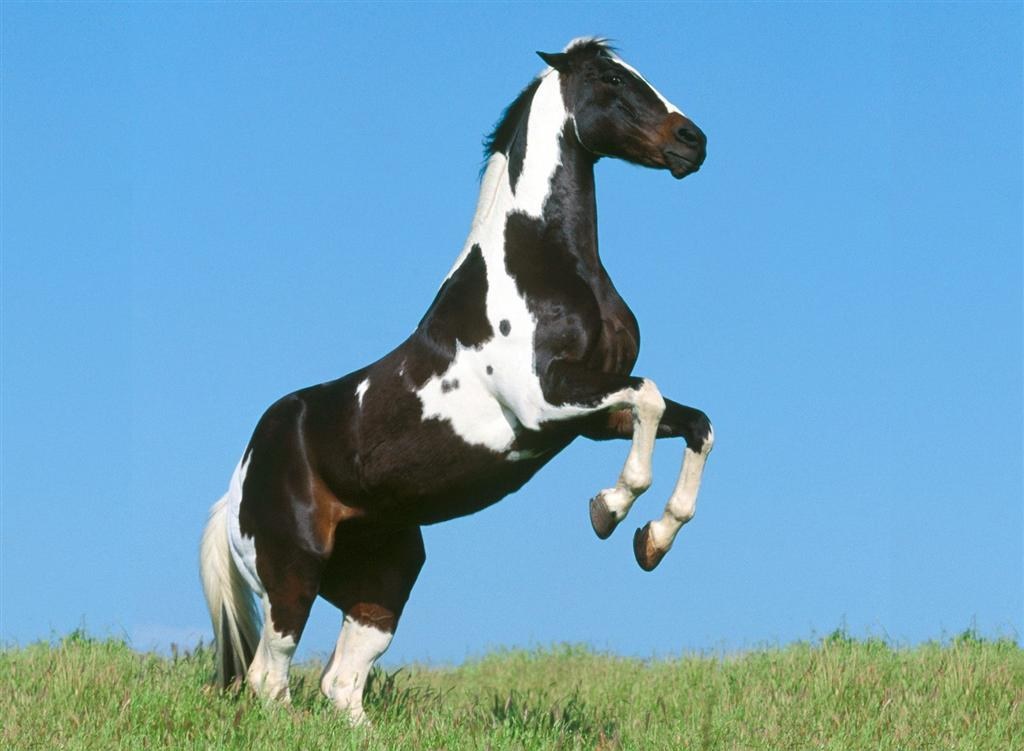
Aśvini Nakshatra
BPL COMMENTARY
Aśvini = light-and-sound healers who work with polarity and pulse, such as pulsing laser light beams. They are a pair and inseparable. Naturally, aśvini-born have superb hearing and are extremely sensitive to vibrational frequency.
Although this technology and other similar light-and-sound healing methods were forgotten as previous civilizations each slipped into the bottom of the cycle, the present ear is returning to this ancient knowledge and collective memory is resurging.
When horses (Asva) were delivered to Earth, they came in pairs for breeding. The old stories tell that these remarkable pairs were often discovered behind a dissolving cloud [Ketu] while standing under a tree (medicinal plant spirit).
The bringers of the horses also brought marvelous medicines. Those hailing from Mesarthim also seeded the earth's memory grid with potential inventions to be developed when the time would be (again) appropriate.
These gifts helped civilizations to rebuild and cemented a remarkable, now-ancient bond between humans and horses. Despite the invention of new technologies of transport, many humans still cherish horses due to the healing power of the equine spirit. These cherishers accept the time and expense required for the horses' care as a loving service to this dear species who have shared the path with humans for millennia..
Often cited as the creatures likeliest to graduate from the 2nd-level kingdom of plants and animals, into the 3rd level kingdom of humanoids, are tame horses, domestic cats, domestic dogs, service elephants, and trees,
Aśvini = inventive genius and healer, but often swayed by Others.
One of the primary challenges faced by one born into a Nakshatra of Ketuva = Aśvini - Dasra, Makha, or Mula - Nirṛti = circuit-breaker Ketu tends to provide a blank screen upon which others may project their desires. It may be beneficial to meditate upon one's authentic preferences and secure one's choices by writing them or speaking them. Without a conscious awareness of the need to ascertain one's own true preferences, the natural apathy of Ketu may lead the native into inauthentic choices based on the will of more ambitious, more opportunistic Others [Rahu].
BPL COMMENTARY
pada-1-2-3-4 = [00:00 Mesha - Aja until 13:20 Mesha] = (8th, chidrakaraka-Ketu)
Sudden dispersal of outdated identity, eruption of new conditions, long-covered secrets revealed. Often an inventor; excavator; discoverer; initiator of new paradigms; agent of radical change (8).
Eccentric and unorthodox ideas emerge according to natal characteristics of Professor Ketur.
Ketu-ruled Aśvini may experience some mental health issues, yet on the plus side this nakshatra is often blessed with clairaudient sensitivity
In and of itself, the gift is not useful until the native learns to control and refine one's healing powers.
Like wild horses, aśvini needs skills training and inner discipline to apply the knowledge thus gained toward compassionate service.
Otherwise Aśvini simply runs free - a being of great power and beauty but concerned only with self.
Importantly: the female Aśvini native = "partner-optional"
Although companionship may be appreciated and Aśvini may cheerful marry with positive expectation (so long as partner also enjoys a Rahu-Ketu ruled Chandra)
the independent and self-sufficient Aśvini woman may live in Ketu-conscious-contentment without a full-time partner. Ketu facilitates disconnections and depending on matters seen within 7th-from-Chandra as well as rulers of 7th-bhava and 7th-navamsha, one may have scheduled a number of socially recognized severances.
Aśvini-born can have a horsey ambience = large teeth, likes to run, independent and psychically attuned.
Aśvini usually has a Twin = either a psychic twin or a physical twin. This twin = person or a being to whom the Aśvini native can listen clairaudiently. Aśvini inventors, scientists, intuitive are easily able to communicate with their twins on the Other Side.
Rising Nakshatra
Feminine Public-Figure Examples
Aśvini - Dasra
BPL COMMENTARY
For Aśvini births of a feminine valence, the condition of limitless, observing, uncoupling, surrendering, abandoning, disinterested, ethereal, wandering, spacious, dispersing Ketu may considerably affect the outcome.
For those born into the Ketu-ruled paradigm of Nasatya, spirit guides, astral beings, ghosts, pilgrims, wanderers, cutters, dispersers, splitters, de-couplers, winds, flags, tails, cloudy figures, agents of impermanence and release, events of forgiveness and surrender, freedom from conventions, and inner listening may be especially influential.
Instructional guidance is provided by emissaries from the civilizations of Mezarthim. Their purpose is hearing the higher frequencies and healing intuitively.
Innovating Observer
Akaza-ruled Aśvini ladies are independent minded. Nasatya-born ladies are often athletic. They may practice various methods for maintaining an exceptionally slender physique. Psychologically competitive, feminine Ashvayujau often appear nonchalant while quietly marshalling their militant forces.
Ashvakini tend to marry fascinating Rāhu-influenced partners, if they marry at all.
Aśvini tends to express the innovative, competitive vigor of Mangala through the witnessing, detached behaviors of Ketu. All pada can be interested in medicine, but the 4th pada are nearly always midwives, naurses, physicians, dentists, or other recognized healing roles. Aśvini damsels are often found in medical environments such as pharmacies, hospitals, surgeries, clinics, and birth centers.
Akasha-born are blessed with a psychic [Ketu] agility to enter and exit the fleshbody. This skill brings them into roles such as medical intuitive and spiritual healer. Their meditative and clairsentient skills may be advanced. Yet, Asva is typically modest regarding their healing powers, which they tend to attribute to Others such as deities, medical science, nature , or their partner.
Themes of personal freedom , unrestricted movement, and intuitive awareness may contextualize Aśvini's terrestrial experience. Applies also to Chandra in Aśvini - Dasra
QUOTATION Aśvini
from Shil-Ponde. (1939). Hindu Astrology Joytisha-Shastra . p 91
" ... she will possess a modest, clean, wholesome, and admirable character.
She will have an inherent respect and admiration for older people,
-
particularly her parents
but she will be independent of them
-
because of her ability to earn her own living and to make her own career .
She will have a very good figure
-
and even, white teeth.
A capable and self-sufficient person."
[end quote, Shil Pondey, 1939]
Mockingbird
illustration by Vasilisa Romanenko = https://www.vasilisaart.com
Feminine
EXAMPLE
Aśvini indriya-lagna
-
see also: Chandra in Aśvini - Dasra
-
there are no pushkara pada in the Ketu-ruled nakshatra
[Aśvini pada-1] = [DOUBLE MESHA]
[pioneering, dominating, active-aggressive, speedy, forceful, conquesting, competitive, athletic, new, bloody, muscular, innovative, battling, invasive, first-arriver, championship master.]
[Makara 10th-navamsha] = Career, Public Reputation
status-maintaining, hierarchical, institutional, regulatory, governing, directing, legitimizing, ranking, ordering, class-conscious, structuring, lawful, fixed-position, dignified elite. ]
-
POTUS-pair-40 Just Say No 1921-2016 Nancy Davis Reagan [Bharani svamsha]
[Aśvini pada-2] = [Urisha]
[finance, face, family, food, tradition, treasures, pleasures, speech, song, language, capitalization, sensual values, historical knowledge, sound, color, taste, touch, beauty, cattle, oil, sugar, sweetness, wine, ornaments, music.]
[Kumbha 10th-navamsha] = Career, Public Reputation
community, fundraising, social-participation, gridworking, gainful, economics, distribution systems, marketplace revenues, associative webs, scientific, futuristic, networking, profitable, collectivist, populist, friendly.]
-
UK Princess 1982- Kate Middleton [Rohiṇī svamsha]
[Aśvini pada-3 ] = [Mithuna]
[publicizing, explaining, detailing, mercantile, collaborative, communicative, media-messaging, team-working, tallkative, managing, planning, writing, instructional, neighborly.]
[Meena 10th-navamsha] = Career, Public Reputation
guiding, intuitive, conceptual, abstract, visionary, symbolic, wholistic, amorphous, privately-guided, vague, charitable, sleepy, imaginative, contemplative, dreamlike.
-
Syria-Pres-pair 1975- shopping Asma al-Assad [Arudra svamsha]
[Aśvini pada-4] = [Karkata]
[defensive, nationalistic, rhythmic-algorithmic, worshipping, protective, customary, ritualized, routinized, rutting, tidal, moody, habitual, parental, cultural-agricultural, householding.]
[Mesha 10th-navamsha] = Career, Public Reputation
championship, engineering, first-arriving, invasive, weaponizing, fighter, pioneering, muscular, dynamic, energetic, pushy, conquesting, innovative, fiery, new-birth .]
- POTUS-pair-13 Libraries 1798-1853 Abigail Powers Fillmore [Pushya svamsha]
Feminine Public-Figure Examples
Aśvini Svamsha
Rising Nakshatra
Masculine Public-Figure Examples
BPL COMMENTARY
For Aśvini births of a masculine valence, the condition of limitless, observing, uncoupling, surrendering, abandoning, disinterested, ethereal, wandering, spacious, dispersing Ketu may considerably affect the outcome.
For those born into the Ketu-ruled paradigm of Nasatya, spirit guides, astral beings, ghosts, pilgrims, wanderers, cutters, dispersers, splitters, de-couplers, winds, flags, tails, cloudy figures, agents of impermanence and release, events of forgiveness and surrender, freedom from conventions, and inner listening may be especially influential.
Instructional guidance is provided by emissaries from the civilizations of Mezarthim. Their purpose is hearing the higher frequencies and healing intuitively.
" and now for something completely different"
Innovating Observer
Akasha-ruled chaps express the innovative, competitive vigor of Mangala through the observant, naebulizing filters of Ketu. Dasra fellows are famed for their pioneering inventions in medical, scientific, or technological fields. They are often obsessed with tools and gadgets. The 4th pada are nearly always physicians, naurses, or herbalists.
Competitive and irascible, often reclusive and disregarding of others' feelings, boldly productive Dasra are found in medicine, engineering, scientific instrumentation, and all species of gadgetry.
Azvikini are often found in medical or veterinary environments such as pharmacies, laboratories, hospitals, surgeries, and clinics. Due to their psychic [Ketu] capability to engage with astral patterns, asvakini can also serve as medical intuitives and spiritual healers.
When looking for new ideas, they pursue an intuitive instinct to tap into the Akashic grid. Unconcerned with conforming to conventional expectations, they may seem selfish or rude. However, their job is to innovate, not to submit to old paradigms. Criticism rarely affects them.
Dasra-born h ear the psychic instructions which guide their product design, surgical cutting, or drug formulation. Then, aśvini actively pushes [Kuja] the ethereal vision into material realization. Whatever endeavor they choose to pursue, aśvini tend to initiate new methods and produce new things .
Ashvakini fellows tend to prefer the freedom of bachelorhood. If they choose to marry, the mate shoulders most of the family duties. Within relationships, much depends upon their Chandra.
Themes of eccentricit y, invention, irritability, and psychic vitality may contextualize Aśvini's terrestrial experience. Applies also to Chandra in Aśvini - Dasra
QUOTATION Aśvini
from Shil-Ponde. (1939). Hindu Astrology Joytisha-Shastra . p 84
" ... a happy carefree disposition,
-
very intelligent,
-
in fact a rather above average person in this respect.
He will be quite successful and his financial status will be such that
-
he will seldom have to worry about money matters.
In spite of his ability to achieve success,
-
he will be modest concerning himself and his achievements."
[end quote, Shil Pondey, 1939]
-
Masculine
EXAMPLE
Aśvini indriya-lagna
-
see also: Chandra in Aśvini - Dasra
-
there are no pushkara pada in the Ketu-ruled nakshatra
[Aśvini pada-1] =
[Mesha]
[DOUBLE MESHA
[pioneering, dominating, active-aggressive, speedy, forceful, conquesting, competitive, athletic, new, bloody, muscular, innovative, battling, invasive, first-arriver, championship master.]
[Makara 10th-navamsha] = Career, Public Reputation
status-maintaining, hierarchical, institutional, regulatory, governing, directing, legitimizing, ranking, ordering, class-conscious, structuring, lawful, fixed-position, dignified elite. ]
[Aśvini pada-2] = [Urisha]
[finance, face, family, food, tradition, treasures, pleasures, speech, song, language, capitalization, sensual values, historical knowledge, sound, color, taste, touch, beauty, cattle, oil, sugar, sweetness, wine, ornaments, music.]
[Kumbha 10th-navamsha] = Career, Public Reputation
community, fundraising, social-participation, gridworking, gainful, economics, distribution systems, marketplace revenues, associative webs, scientific, futuristic, networking, profitable, collectivist, populist, friendly.]
[Aśvini pada-3] = [Mithuna]
[publicizing, explaining, detailing, mercantile, collaborative, communicative, media-messaging, team-working, tallkative, managing, planning, writing , instructional, neighborly.]
[Meena 10th-navamsha] = Career, Public Reputation
guiding, intuitive, conceptual, abstract, visionary, symbolic, wholistic, amorphous, privately-guided, vague, charitable, sleepy, imaginative, contemplative, dreamlike.
-
Homeopathy 1755-1843 Dr. Samuel Hahnemann [Punarvasu svamsha]
-
My Inventions 1856-1943 Nikola Tesla [Punarvasu svamsha]
-
Apple Computer 1955-2011 Steve Jobs [Arudra svamsha]
[Aśvini pada-4] = [Karkata]
[defensive, nationalistic, rhythmic-algorithmic, worshipping, protective, customary, ritualized, routinized, rutting, tidal, moody, habitual, parental, cultural-agricultural, householding.]
[Mesha 10th-navamsha] = Career, Public Reputation
championship, engineering, first-arriving, invasive, weaponizing, fighter, pioneering, muscular, dynamic, energetic, pushy, conquesting, innovative, fiery, new-birth .]
Unsorted
-
theoretical physics professor + experimenter Enrico Fermi
-
Nobel Prize mathematics, paranoid delusions John Forbes Nash
-
Jyotisha software Das Goravani
Masculine Public-Figure Examples
Aśvini Svamsha
-
see also: Chandra in Aśvini - Dasra
- Bacteriology 1822-1895 Microbes Louis Pasteur [Aśvini svamsha]
General Description of Aśvini characteristics
QUOTATIONS from Das/ Behari
Description of the Pada = four quarters = four steps = of Aśvini
[Aśvini-pada-1] -- [00:00 Mesha 03:20 ]
DOUBLE MESHA
This indriya-lagna is eligible to use śatābdikā dasha
= [vargottamsha] super-pada for innovation and chamionship
[mūlatrikoṇa for Mangala]
BPL COMMENTARY
Leadership
[Makara - Draco] rules the [10th navamsha] suggesting Shani-profiled careers in governance , over-seer, legislation, policy and law, executive decision-making, bureaucracy, social ordering, hierarchies, stepwise processes, protocols and procedures, imposition of rules and consequences, elder judge, graduations and grading, professions of aging and antiquities, geriatrics, stiffening, rigidity, stones-and-bones, old things, structure
Partnership
[Tula - Vanika] = the [7th navamsha] , broadly suggesting Shukra--profiled spousal characteristics of harmonizing nature, sweets-seeking tendencies, luxury lifestyle, gracious arrangements, adjustability, negotiating skills, partnership orientation, and diplomatic perspective.
D-1 Bhrigu can indicate the lifemate's social context and position. Graha residing within the 7th navamsha ++ graha-yuti-Shukra-D-1 can contribute more detailed behaviors.
Feminine Public-Figure Examples [Aśvini pada-1] = [DOUBLE MESHA]
-
POTUS-pair-40 Just Say No 1921-2016 Nancy Davis Reagan [Bharani svamsha]
Masculine Public-Figure Examples [Aśvini pada-1] = [DOUBLE MESHA]
[Aśvini-pada-1] QUOTATION
from Das / Behari
" Gracious personality,
-
enjoys good power and exchange ideas with learned people.
Occupies a high position in a company or government service.
Affected with excess bile complaints.
If this extension also is the Lagna (ascendant)
-
and Jupiter also is positioned here, one lives up to 83 years.
Even though you are a good executive,
-
you are not generally liked by your associates and employees. "
[end quote]
[Aśvini-pada-1] QUOTATION
for the Male only= Description of the Four Pada (quarters) of Aśvini, from Shil-Ponde. (1939). Hindu Astrology Joytisha-Shastra. p 108
" Fat
-
has short nails. Eyes are large, may have buck teeth.
-
Fond of jewels, bracelets, rings, and other ornaments of attire.
Artistic."
[end quote]
SUB-SECTIONS of [Aśvini-pada-1]
Nakshatra Divisions of Mesha Svamsha
[Aśvini svamsha] = [00:00 until 13:21]
Affinity for pioneering innovation. Astute observer. Eccentric. Scientist, medical-doctor, veterinarian, energy-healer. Expert in subtle winds and vacuums.
- May be an equestrian specialist. Forward-moving and unencumbered by outdated restrictions. Champion of new approaches in medicine and engineering.
[Makara 10th-navamsha] = Career, Public Reputation =
Physician, inventor, engineer within the public realms of regulatory compliance, organizational governance, status hierarchies, maintenance of social order. Behaves politely, but essentially unconcerned with the common fears and superstitions that shackle humankind.
Check graha in Makara 10th-navamsha ++ Shani in kundali ++ Ketu in kundali, along with Ketu's ruler.
[Bharani svamsha] = [13:21 until 26:39]
Affinity for finance, acquisitions, and storage of precious assets. May specialize in matters of earthen-body death, such as estate law, funerals, or end-of-life arrangements. May be specialists in the financial affairs of the dead.
- Weighs and balances the trading values. May carry heavy burdens of precious goods. Preserves food, tradition, natural resources, historical knowledge, hoards.
[Makara 10th-navamsha] = Career, Public Reputation =
Entreasurement brokers and arrangers within the public realms of regulatory compliance, organizational governance, status hierarchies, maintenance of social order . Often in corporate banking, currency-trading and evaluation, institutional equity.
Check graha in Makara 10th-navamsha ++ Shani in kundali ++ Shukra in kundali.
-
POTUS-pair-40 Just Say No 1921-2016 Nancy Davis Reagan [Bharani svamsha]financial deal-maker
[Kṛttikā svamsha] = [26:39 until 29:59 ]
Affinity for politics, center-stage attention, theatrical romance, s parkling costume, adoring children, and speculative games. Financially intelligent. Radiates confident superiority.
- Genius of ceremonial display. Cannot be intimidated. Brilliantly self-assertive. Delighted to stand in the spotlight. May enjoy winning public office by acclamation or political election.
[Makara 10th-navamsha] = Career, Public Reputation =
charismatic policy-maker, self-certain creator within the public realms of regulatory compliance, organizational governance, status hierarchies, maintenance of public order.
Check graha in Makara 10th-navamsha ++ Shani in kundali ++ Surya in kundali.
[Aśvini Pada-2]
[03:20 Mesha- 06:40]
Svamsha = navamsha Vrishabha - Urisha
[mūlatrikoṇa for Mangala]
BPL COMMENTARY
Leadership
[Kumbha - Ghata] rules the [10th navamsha] suggesting Shani- profiled careers in scientific systems, regulated networks, distribution networks, economics, ecologies, communities, friendship linkage, weaving, knitting, knotting, making of nets, marketplaces, associations, large-scale gatherings, professions of the marketplaces, bazar, social participation, gridwork, framework, conceptual exchange grids, social and electro-magnetic connections
Partnership
Vṛścika-Ketta = the [7th navamsha] , broadly suggesting Mangala-profiled spousal characteristics of penetrating nature, surgical tendencies, pursuit of mystery, quest for discovery and disclosure, psychological vigor, trauma-healing abilities, controlling attitude, mining and harvesting skills, preference for unexpected action , and secretive perspective.
D-1 Kuja can indicate the lifemate's social context and position. Graha residing within the 7th navamsha ++ graha-yuti-Kuja-D-1 can contribute more detailed behaviors.
Feminine Public-Figure Examples [Aśvini pada-2 = Urisha]
-
UK Princess 1982- Kate Middleton [Rohiṇī svamsha]
Masculine Public-Figure Examples [Aśvini pada-2 = Urisha]
-
Jyotishavidya software Das Goravani
[Aśvini Pada-2 ] QUOTATION
from Das / Behari WRT Aśvini Pada-2
" Not a good position.
-
tall and clever.
You are fond of eating spicy food and drink.
-
You will have trouble through the opposite sex.
Unless remedial measures are observed,
-
you cannot get out of poverty.
-
You are selfish and ambitious ." [end quote]
[Aśvini pada-2] QUOTATION
for the Male only - = Description of the Four Pada (quarters) of Aśvini, from Shil-Ponde. (1939). Hindu Astrology Joytisha-Shastra. p 108
" Fat, has short nails.
-
Eyes are large
May be a scientist, philosopher, writer,
-
Will be a leader in any walk of life.
-
Walks very fast; has a habit of pacing back and forth
likes sea voyages
-
and may deal with or work in foreign countries."
[end quote]
SUB-SECTIONS of [Aśvini pada-2]
Nakshatra Divisions of Urisha Svamsha
financial, knowledgeable, heritage, remembering, collecting, accumulating, traditional, linguistic, historical, musical, evaluating, assessing
[Kṛttikā svamsha] = [00:00 until 09:59]
Affinity for politics, center-stage attention, literary-theatrical romance, s parkling jewels, adoring children, and speculative games. Financially intelligent.
- Friendly, creative, connected. Lavishly entitled. Speaks for proletarian causes. Genius of political fundraising. Luxuriates in admiration from the common folk. May be a gifted orator, musician, or singer.
[Kumbha 10th-navamsha] = Career, Public Reputation =
charismatic socialite in the public realms of economic gridwork, mass-participation interlinkage, fundraising systems, collectivism, marketplaces, big crowds, community, friendly association, vast electronic arrays, interconnected distribution networks
Check graha in Kumbha 10th-navamsha ++ Shani in kundali ++ Surya in kundali.
[Rohiṇī svamsha] = [10:00 until 23:19]
Shukra = fair-bargainer confers equity. Affinity for soothing routines of home and household. Requires the adoring attentions of the beloved, being lavished with luxury, and decorated with beautiful ornaments or surrounded by valuable art-and-music. May be a gifted orator, musician, or singer.
- If these needs are met, expect a devoted and protective companion. Intuitive sense of rhythm and pace may confer musical gifts. May be sensually attractive and popular with the masses.
[Kumbha 10th-navamsha] = Career, Public Reputation =
sensitive, parental socialite within the public realms of economic gridwork, mass-participation interlinkage, fundraising systems, collectivism, marketplaces, big crowds, community, friendly association, vast electronic arrays, interconnected distribution networks
Check graha in Kumbha 10th-navamsha ++ Shani in kundali ++ Chandra in kundali.
-
UK Princess 1982- Kate Middleton [Rohiṇī svamsha] = independent earning via royal engagements, celebrated pianist
[Mriga-shiras svamsha] = [23:19 until 29:59]
Affinity for commercial assessment and financial competition. Pursues valuable collections. Monetary management, business banking. Energetic, sensual physical movement. Vigorous accrual, pro-active acquisition, energetic storage of heritage affluence.
- Often an orator or singer. May be an entrepreneurial funding specialist, shopkeeper, craftsperson, manufacturer, or shrewd vendor of luxury ornaments, textiles, wines, scents, or oils.
[Kumbha 10th-navamsha] = Career, Public Reputation =
evaluating, businesslike socialite within the public realms of economic gridwork, mass-participation interlinkage, fundraising, electronic systems, distribution networks, associative friendships.
Check graha in Kumbha 10th-navamsha ++ Shani in kundali ++ Mangala in kundali.
[Aśvini Pada-3 ]
[06:40 Mesha 10:00]
[mūlatrikoṇa for Mangala]
BPL COMMENTARY
Leadership
[Meena - Antya] rules the [10th navamsha] suggesting Guru-profiled careers in charity, spiritual guidance, divination, water-gazing, dream-interpretation, clairsentient visions, imagination, sacred symbols, astral bridging, invisible environments, sleep, subtle sounds and vibratory patterns, private prayer, meditation, seclusion, great cosmic cycles, reflective thought, philosophical theory, ancestor spirits, telepathy, empathy , cetaceans and cultures of Sirius
Partnership
[Dhanus - Haya] = the [7th navamsha] , broadly suggesting Guru-profiled spousal characteristics of expansive nature, preaching or professorial tendencies, engagement with higher principles and dogma, quest for understanding, philosophical vigor, inclusive attitude, priestly roles, indoctrination skills, preference for humanistic worldview, and global perspective.
D-1 Brihaspati can indicate the lifemate's social context and position. Graha residing within the 7th navamsha ++ graha-yuti-Guru-D-1 can contribute more detailed behaviors.
Feminine Public-Figure Examples [Aśvini pada-3 = Mithuna]
- Syria-Pres-pair 1975- shopping Asma al-Assad [Arudra svamsha]
Masculine Public-Figure Examples [Aśvini pada-3 = Mithuna]
-
Homeopathy 1755-1843 Dr. Samuel Hahnemann [Punarvasu svamsha] - Germany, France
-
My Inventions 1856-1943 Nikola Tesla [Punarvasu svamsha] - Croatia, Austro-Hungarian empire, France, USA
-
Apple Computer 1955-2011 Steve Jobs [Arudra svamsha]
[Aśvini Pada-3 ] QUOTATION
From Das / Behari
"You will be much learned
-
and expert in various sciences and religious scriptures.
You are exceedingly active.
-
You are a good friend to those whom you can impress."
[end quote]
[Aśvini pada-3] QUOTATION
f or the Male only -= Description of the Four Pada (quarters) of Aśvini, by Shil-Ponde. (1939). Hindu Astrology Joytisha-Shastra. p 108:
Same as pada-2 .
" Fat, has short nails.
-
Eyes are large
May be a scientist, philosopher, writer,
-
Will be a leader in any walk of life.
-
Walks very fast; has a habit of pacing back and forth
likes sea voyages
-
and may deal with or work in foreign countries."
[end quote]
SUB-SECTIONS of [Aśvini pada-3]
Nakshatra Divisions of Mithuna Svamsha
[Mriga-shiras svamsha] = [00:00 until 06:39]
Affinity for commercial assessment and business competition. Active administrative communications. Energetic physical gesturing movement.
- Vigorously transactional. Champion of sales, advertising, media-messaging, publications, instructions, announcements. May be an entrepreneur, shopkeeper, craftsperson, manufacturer, writer, or vendor of information. Brooks no interference.
[Meena 10th-navamsha] = Career, Public Reputation =
commercially driven visionary within the public realms of fantasy. conceptual imagery, global understanding, interior spiritual guidance, expansion of compassion, private contemplation, faith in oceanic oneness, dreamlike sanctuary. Charitable but desires prestige.
Check graha in Meena 10th-navamsha ++ Brihaspati in kundali ++ Mangala in kundali.
[Arudra svamsha] = [6:40 until 19:59]
Affinity for atmospheric volatility. Intense signaling communication between the physical-body and the mentality. Spans exhilaration to pain .
- Disruptive jealousy. Stormy, ambitious, taboo-challenging personality seeks extreme weather. Prone to wrestling, fighting, racing, dancing, and hormonal fluctuation. Fabulous scripts, exaggerated interpretation, cinematic illusion.
[Meena 10th-navamsha] = Career, Public Reputation =
commercially opportunistic visionary within the public realms of fantasy. conceptual imagery, global understanding, interior spiritual guidance, expansion of compassion, private contemplation, faith in oceanic oneness, dreamlike sanctuary. Charitable but desires prestige.
Check graha in Meena 10th-navamsha ++ Brihaspati in kundali ++ Rāhu in kundali
- Apple Computer 1955-2011 Steve Jobs [Arudra svamsha]
- Syria-Pres-pair 1975- shopping Asma al-Assad [Arudra svamsha]
[Punarvasu svamsha] = [20:00 until 29:59]
[Guru rules both svamsha and 10th-navamsha]
Guru the Grower confers breadth of understanding. Affinity for writing. Uplifting fiction and cosmic explanations. May develop a broadly encompassing, comprehensive script which details the lives of well-crafted characters.
- Wide-scope, expansionist, tolerant, ideological globalist, philosophical worldview. Inspirational, principled, and generous. Seek mercantile publication of their grand concepts.
[Meena 10th-navamsha] = Career, Public Reputation =
commercially humanistic visionary within the public realms of fantasy. conceptual imagery, global understanding, interior spiritual guidance, expansion of compassion, private contemplation, faith in oceanic oneness, dreamlike sanctuary. Charitable but desires prestige.
Check graha in Meena 10th-navamsha ++ Brihaspati in kundali
-
Homeopathy 1755-1843 Dr. Samuel Hahnemann [Punarvasu svamsha]
-
My Inventions 1856-1943 Nikola Tesla [Punarvasu svamsha]
Mithuna
][Aśvini Pada-4]
[10:00 Mesha 13:20]
[mūlatrikoṇa for Mangala]
- Guru in Aśvini-4 attains Karkata-navamsha, indicating patriotic benevolent generosity and philosophical humanism
BPL COMMENTARY
Leadership
[Mesha - Aja] rules the [10th navamsha] suggesting Mangala-profiled careers in championship, first-arrival, innovation, engineering, competition, challenge, conquest, dueling, domination, pioneering actions, use of force, hunting, dance, massage, muscular physique, physical appearance, embodiment, sexual pursuit, athletics, new birth, insemination, obstetrics, blood chemistry, inventions, novelty, singularity, winning
Partnership
[Makara - Draco] = the [7th navamsha] , broadly suggesting Shani-profiled spousal characteristics of disciplined nature, regulatory or legislative tendencies, engagement with duty and responsibility, quest for orderly systems, pragmatism, common-sense attitude, rule-application skills, preference for conservative practices, and materialistic perspective.
D-1 Shani can indicate the lifemate's social context and position. Graha residing within the 7th navamsha ++ graha-yuti-Shani in D-1 can contribute more detailed behaviors.
Masculine Public-Figure Examples [Aśvini pada-4 = Karkata]
Feminine Public-Figure Examples [Aśvini pada-4 = Karkata]
- POTUS-pair-13 Libraries 1798-1853 Abigail Powers Fillmore [Pushya svamsha]
[Aśvini Pada-4 ] QUOTATION
from Das / Behari
" This position is the most outstanding position for Moon, provided Sun is not in conjunction.
You attain a high education and knowledge in various branches of sciences with your own efforts.
Mostly persons born in 12th degree to 13th degree of Aśvini are
-
officers or doctors or persons holding very high position in government.
-
Doctors born in this part of Ashwini Nakshatra become successful in the medical field.
The same is the result when the Ascendant falls in 4th part of Aśvini
-
even if the Moon is positioned elsewhere.
Your distinguishing feature is that there will be a scar or mark on the head or face." [end quote]
[Aśvini pada-4] QUOTATION
for the Male only = Description of the Four Pada (quarters) of Aśvini, by Shil-Ponde. (1939). Hindu Astrology Joytisha-Shastra. p 108
" Hard, lean body.
-
Fond of pets and animals.
-
May be a preacher or a minister." [end quote]
SUB-SECTIONS of [Aśvini-pada-4]
Nakshatra Divisions of Karkata Svamsha
[Punarvasu svamsha] = [00:00 until 03:19]
[Guru the Grower signals breadth of understanding. Affinity for writing. Uplifting fiction and cosmic explanations. May develop a broadly encompassing, comprehensive script which details the lives of well-crafted characters.
- Ethno-rhythmic habits yet wide-scope, expansionist, tolerant, ideological globalist, philosophical worldview. Humanistic anthropologist. Inspirational, principled, and generous. Recognizes the ancient routines.
[Mesha 10th-navamsha] = Career, Public Reputation =
innovative teacher-preacher within the public realms of new starts, physical medicine for vitality, engines and generation, competitive championship, kinetic energy, first-arrival, birth.
Check graha in Mesha 10th-navamsha ++ Mangala in kundali ++ Guru in kundali.
[Pushya svamsha] = [03:20 until 16:39]
Affinity for lawful hierarchies. Often a lawyer or regulatory official. Needs a structured, ritualized, undulating routine within the governing apparatus. May be corporate director or responsible head-of-household. Distinguished work-ethic.
Maintains the rhythms of the customary order.
- Seeks security through rank, status, and position. Sensitive to ancestral land use, marine environments, parental duties, and family respect. In any industry, tends toward career stability and longevity.
[Mesha 10th-navamsha] = Career, Public Reputation =
innovative bureaucrat within the public realms of new starts, physical medicine for vitality, engines and generation, competitive championship, kinetic energy, first-arrival, birth.
Check graha in Mesha 10th-navamsha ++ Mangala in kundali ++ Shani in kundali.
- POTUS-pair-13 Libraries 1798-1853 Abigail Powers Fillmore [Pushya svamsha]
[Aśleṣā svamsha] = [16:40 until 29:59]
Affinity for instructional conversation. Hands-on administration, commerce, information handling, teamwork, discussions, media-messaging, manufacturing, and process control.
- Expert use of guilt or other emotional bondage to restrain the interlocutor. Needs to lash, leash, restrain, manipulate, embrace, and secure.
- Animal control, police officer, instructor-trainer in handcraft, anchoring, harnesses and reins, factory security, arm-twisting salesperson.
[Mesha 10th-navamsha] = Career, Public Reputation =
innovative process manager within the public realms of new starts, physical medicine for vitality, engines and generation, competitive championship, kinetic energy, first-arrival, birth.
Check graha in Mesha 10th-navamsha ++ Mangala in kundali ++ Shani in kundali ++ Budha in kundali.
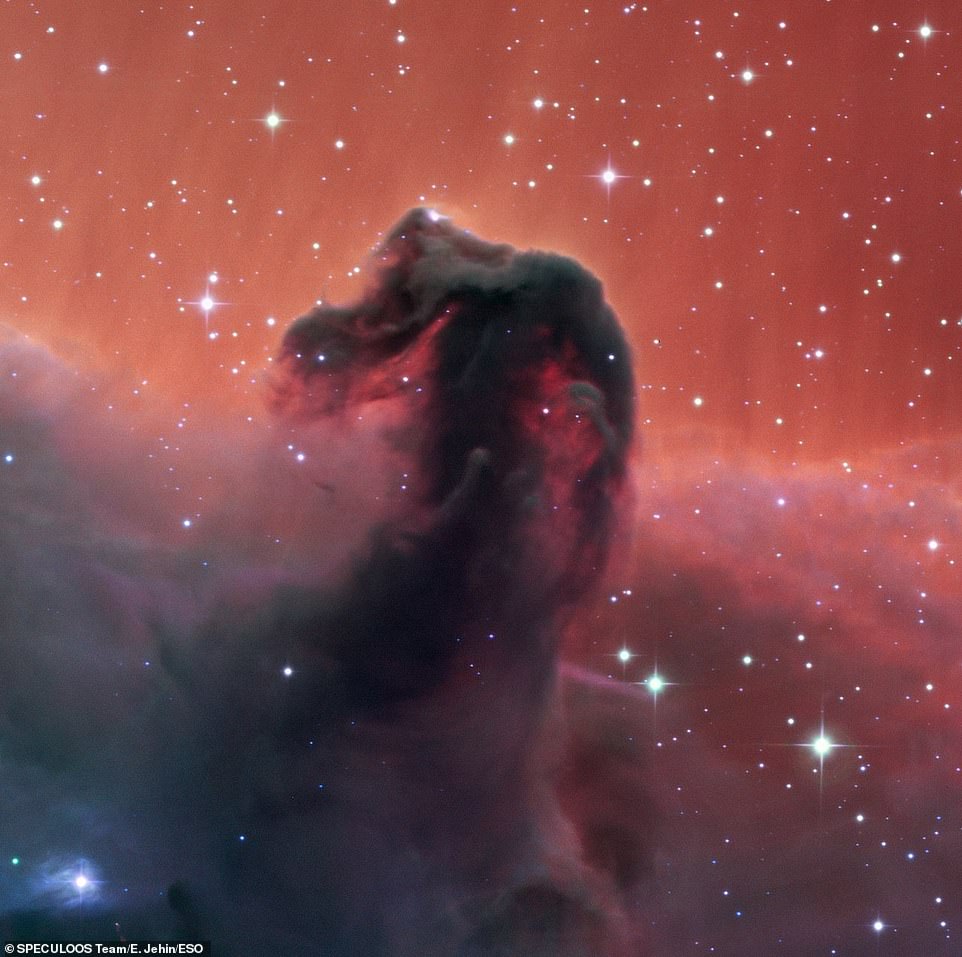
Horsehead Nebula
photographed by European Southern Observatory de La Silla Paranal in Chile
[How Readings Work] = [Sample Sacred Jewels Ratna Recommendation] = [Seva]

file update = 22-Nov-2025
[Copyright © 1994-2024 by Barbara Pijan Lama] = [Contact] = [How to Request a Jyotishavidya Reading]
Barbara Pijan Lama Jyotishavidya Vedic Astrology Surya Sun Chandra Moon Mangala Mars Budha Mercury Guru Jupiter Shukra Venus Shani Saturn Rahu Ketu Graha Planets Dasha Timeline Calendar Nakshatra Navamsha Marriage Children Treasury Career Spiritual Wisdom Cycles of re-Death and re-Birth
The information on barbarapijan.com , including all readings and reports, is provided for educational purposes only. Wishing you every happiness and continuing success in studies!
" And now my friends,
all that is true,
all that is noble,
all that is just and pure,
all that is loveable and gracious,
whatever is excellent and admirable -
fill all your thoughts with these things."
~~ Paul of Tarsus, Epistle to the Philippians 4:8

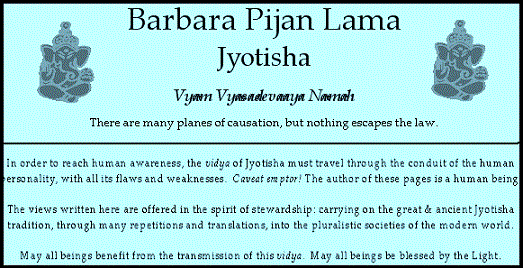
 -
-

